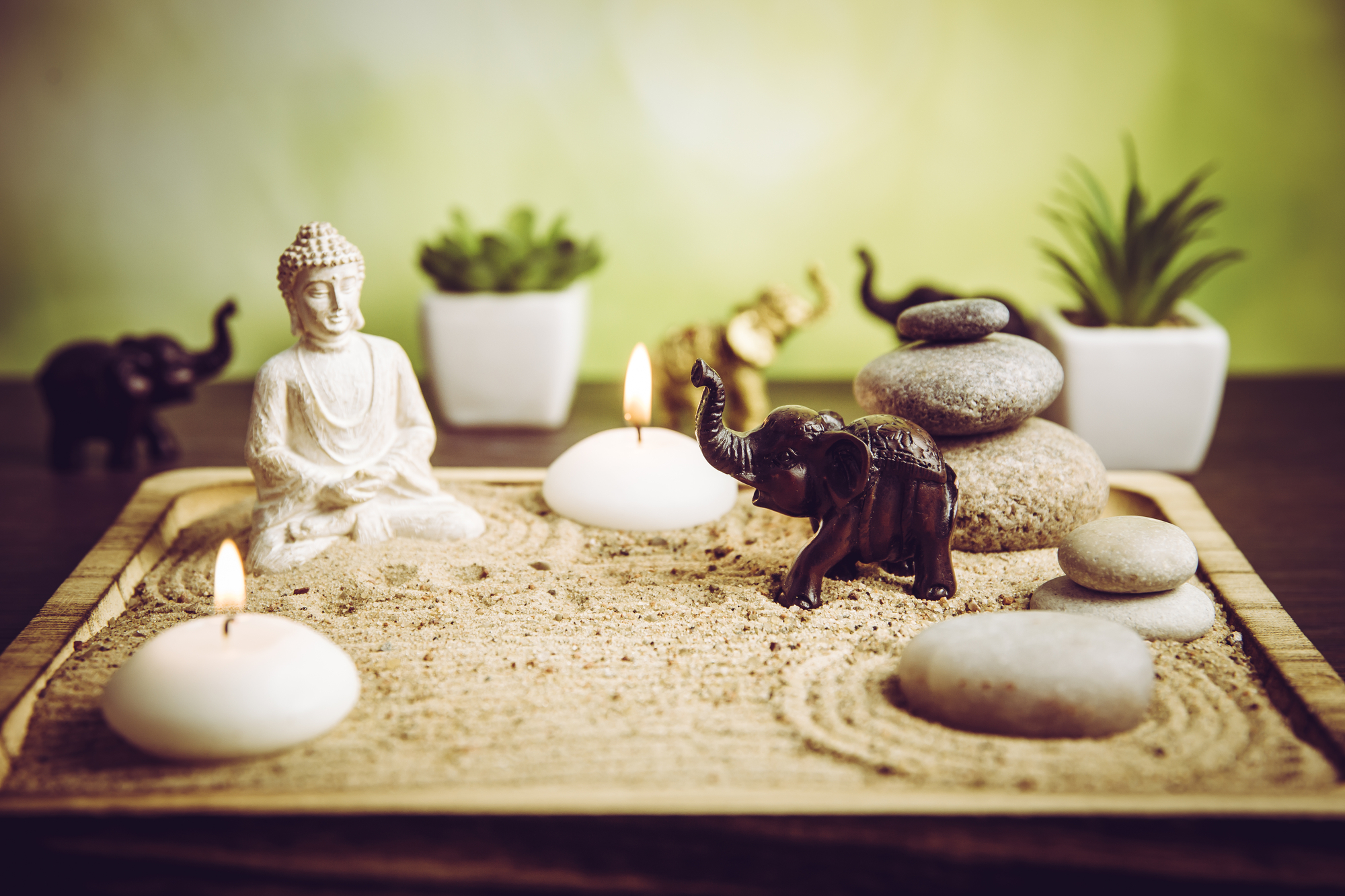The Willow Ridge gift shop offers a beautiful selection of elements to create your own desk or table top Zen Garden but, what if you want to go bigger?
And by bigger, I mean a space in your yard where you can just sit and enjoy the beauty of nature or meditate in your own private space.
Building a Zen Garden is actually an easy DIY project and can be as elaborate or simple as you want to make it. Before we start, let’s learn a little bit about the history of the Zen Garden to get us in the right mind set.
What we know as the Zen Garden of today actually comes from the Rock Garden’s of Japan in the 10th Century. These gardens called ‘Karesansui’ literally means ‘Dry Landscape”. When Zen Buddhism was introduced to Japan in the 11th Century, Buddhist Monks needed to create a space for contemplation and outside of their meditation spaces. The simplicity of this space was not only meant to clear your mind of distraction but to help you understand a larger concept.
In the traditional Zen Garden, the mountains, rivers, ponds, oceans and animals are represented by sand, rocks and moss. These elements are placed very intentionally and are sometimes created as replicas of the oldest gardens in Japan. The purpose of the representation is to help us realize through meditation that we place too much important on material things by not understanding their true nature. An example might be a diamond ring. Our society sees this as a symbol of status, wealth, love or even greed but, in reality a diamond is just a rock and gold is just a metal found in the ground. Its value in nature is no different than any other rock or metal until society decides to give it a price tag. Understanding things for what they are and also what they have the potential to be is the essence of the Zen Garden.
There is no rule that says the Zen Garden needs to be huge. Not everyone has a space the size of a tennis court to dedicate to meditation. The most important step is to create the garden in an area where you can feel at peace for even just a few moments of the day. It could be in a secluded spot in your yard or even on your patio.
The mechanics of the garden are fairly simple. You are basically creating a frame for your dry landscape. This frame could be made of wood, blocks or even stones. The frame should be shallow and should be lined on the bottom with landscape fabric or plastic which will keep weeds from coming through. Once you create your frame you can fill it with sand.
Sand is representative of water. It is usually lightly colored with a fine texture that can be raked to form the swells and waves of an ocean or the calmness of a lake. The beauty of the sand is that you can recreate the patterns over and over based on the feeling you may be trying to reflect.
Rocks are the next element to add and probably the most personal. Every rock has its own personality. Something about the color, the pattern or the shape will speak to you and you need to listen to what it’s saying. It’s not a formula of big or small, round or jagged, it’s the feeling that it brings when you look at it. Gardeners are very familiar with this idea and use it every time they select plants. Something about that flower or tree speaks to you and you know it needs to be part of your landscape. Arranging your rocks is also a matter of preference and there are not any ‘rules’ per say. You just want to keep in mind the area where you will view the garden. If your line of sight will only be from one particular spot, then this is the place you need to sit when deciding your placement. Move them around as many times as you need to until the placement feels right.
The beauty of a Zen Garden is its minimalist simplicity. Although plants and flowers are not planted in the garden itself, they do provide a beautiful backdrop when viewing it. Many Zen Gardens will be framed with monochromatic plantings of texture rather than color so as not to distract from the purpose of the garden.
The addition of flowing water is another consideration. The sand in the Zen Garden represents water which traditionally is supposed to be contemplated through silent viewing rather than actually hearing it, which may be considered a distraction. But again, there are many personal choices in your Zen Garden and water can be a very relaxing element if you so choose.
No matter what elements you decide to include, your garden needs to be a reflection of what makes you happy and at peace.
Willow Ridge has many of the elements to create your tranquil space from creating the frame, to plant selection and amazing rocks so come see us and let us help you create your very own Zen Garden!

